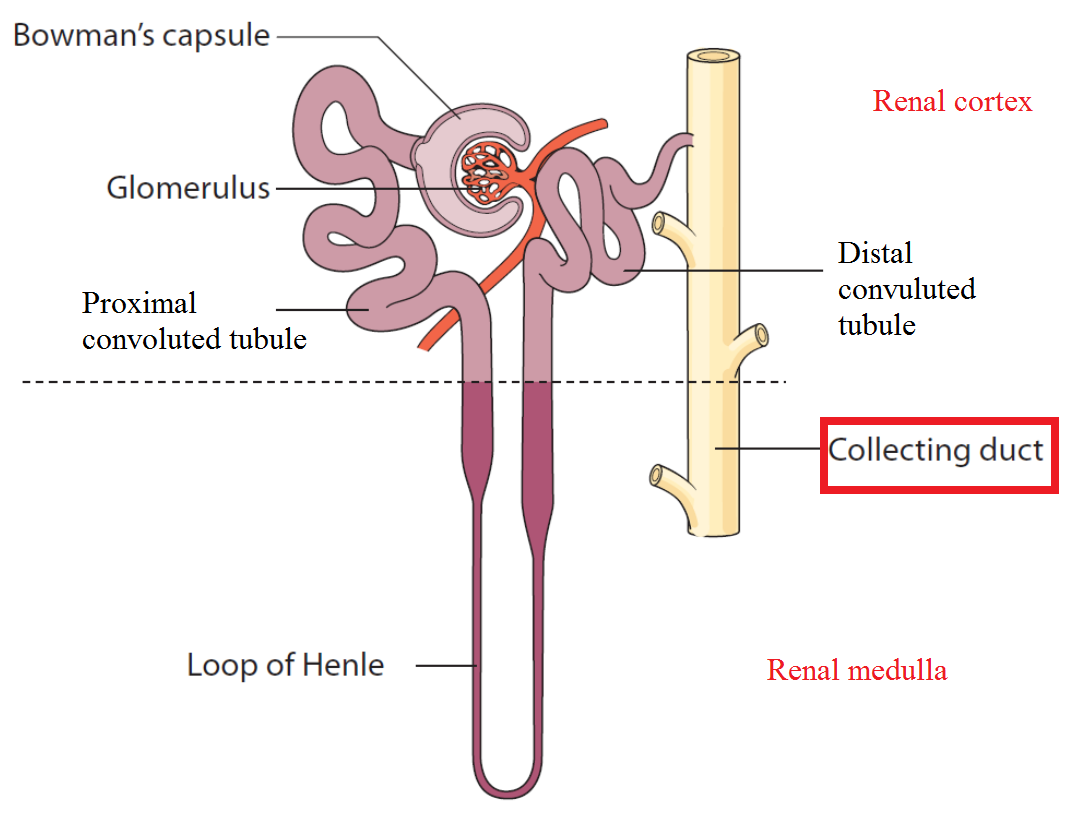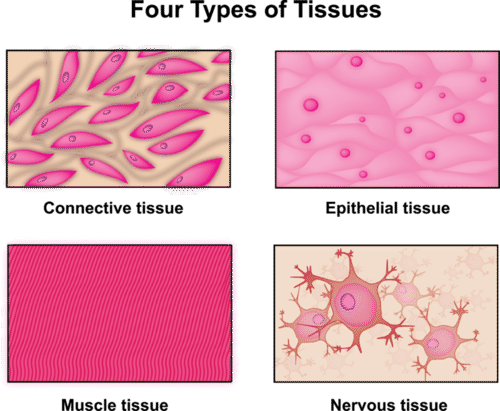本文是英语学习笔记,所有版权归原教材作者所有。

加州五年级《科学》课本,主要分为5个大Section,每个Section由两到三个Chapter构成,每个Chapter含有若干Lesson。
-
Be a Scientist
-
What is Science?
-
-
Life Science
- Chapter 1: Structure of Living Things
- Lesson 1: Cells
- Lesson 2: From Cells to Organisms
- Lesson 3: Diversity of Organisms
- Chapter 2: Plant Structures and Functions
- Lesson 1: Vascular Plants
- Lesson 2: Plant Transport Systems
- Lesson 3: Photosynthesis and Respiration
- Chapter 3: Human Body Systems
- Lesson 1: The Human Body
- Lesson 2: The Digestive System
- Lesson 3: The Respiratory System
- Lesson 4: The Circulatory System
- Lesson 5: The Excretory System
- Chapter 1: Structure of Living Things
-
Earth Science
- Chapter 4: Earth's Water
- Lesson 1: Earth: The Blue Planet
- Lesson 2: The Water Cycle
- Lesson 3: Fresh Water Resources
- Lesson 4: California's Water Supply
- Chapter 5: Earth's Weather
- Lesson 1: Earth's Atmosphere
- Lesson 2: Air Currents and Wind
- Lesson 3: Oceans and Air Temperature
- Lesson 4: Severe Weather
- Lesson 5: Predicting the Weather
- Chapter 6: The Solar System
- Lesson 1: The Sun
- Lesson 2: The Structure of the Solar System
- Lesson 3: Gravity and Orbit
- Chapter 4: Earth's Water
-
Physical Science
- Chapter 7: Types of Matter
- Lesson 1: Properties of Matter
- Lesson 2: Elements
- Lesson 3: Classifying Elements
- Lesson 4: Mixtures
- Lesson 5: Compounds
- Chapter 8: Changes in Matter
- Lesson 1: Chemical Reactions
- Lesson 2: Metals and Alloys
- Lesson 3: Salts
- Chapter 7: Types of Matter
-
Activities
- Life Science
- Earth Science
- Physical Science
看看下面这个术语表,谁再说美国小学课程简单,都是玩到大的,真是自欺欺人。
Glossary
- absorption: A process in which something is taken in and used, as in a cell.
The absorption of nutrients into the body takes place in the small intestine. - acid: A substance that tastes sour, sharp or biting.
- acidity: The strength of an acidic solution.
- aerobic: Having to do with the use of oxygen.
Aerobic exercise, such as running or swimming, strenghens the lungs and heart. - aerial root: A root that never touches the ground.

Aerial roots take in moisture from the air. - air mass: A large region of air that has similar temperature and humidity.
Air masses can be cold, warm, dry, or moist. - air pressure: The force put on a given area by the weight of the air above it.
Air pressure, also called atomospheric pressure, pushes in all directions at once. - algae: A plant-like protist that lives in a water environment.

Algae produce their food using chlorophyll and other similar chemicals. - alkali metal: An element in the most reactive family of metals.

Lithium, sodium, and potassium are all alkali metals. - alkalinity: The strengh of a base solution. (cf. acidity)
- alloy: A mixture of two or more elements, usually metals.
Bronze is a durable alloy made from copper and tin. - altitude: How high something is above Earth's surface.
As altitude increases, air pressure decreases. - alveoli: Thin-walled air sacs within the lungs.

The bronchi eventually empty air into the alveoli during respiration. - ameoba: A common animal-like protist that changes shape to catch food.

Amoeba move by shifting cytoplasm in their cells. - amphibian: A vertebrate animal that spends part of its life in water and part on land.
Frogs and salamanders are amphibians. - anaerobic: Energy production without oxygen. (cf. aerobic)
Anaerobic exercise, such as lifting weights, helps to build muscles. - angiosperm: A seed plant that produce flowers.
Fruits, vegetables, grains, and almost all nuts come from angiosperms. - anus: The opening through which the solid waste leaves the body.
The strong muscles of the anus are located just below the rectum. - aorta: The large artery that carries blood away from the heart and to the rest of the body.

The left ventricle pumps oxygen-rich blood out through the aorta. - aqueduct: A structure that carries large amounts of water from one place to another.

California has many aqueducts. - aquifer: An underground layer of rock, sand, or gravel that contains water.
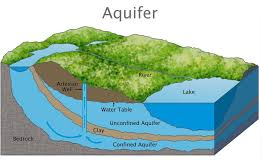
- artery: A blood vessel that carries blood away from the heart.
Arteries circulate oxygen-rich blood. - arthropod: An invertebrate animal with a hard outer skeleton, a segmented body, and jointed legs.
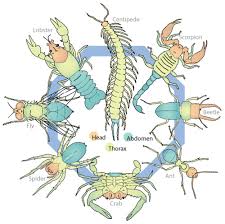
Insects, spiders, and crabs are arthropods. - artificial: Made by man but working like the natural thing.
Doctors have created artificial organs and limbs to help their patients. - asteroid: A large piece of rock or metal in space.
Many asteroids orbit the Sun. - astronomer: A person who studies start, planets, and other objects in outer space.
Many astronomers rely on telescopes to get their data. - astronomical unit (AU): The distance between the Earth and the Sun.
One astronomical unit (AU) equals about 150 million kilometers. - atmosphere: All of the air surrounding the Earth.
The atmosphere can be divided into several layers. - atom: The smallest particle of an element that has the properties of that element.
The atoms in each element are unique and determines its properties. - atomic number: The number of protons in a single atom of an element.
Every element has a different atomic number. - atomic weight: A measure of the mass of a single atom of an element.
Hydrogen has the smallest atomic weight. - atrium (pl. atria): An upper chamber of the human heart.

A valve connects the atrium to the ventricle below it. - aurora borealis [ɔːˌrɔːrəˌbɔːri'eɪlɪs] : Colored lights seen in the upper atomsphere of the northern hemisphere.
from Latin Aurora ("Roman goddess of the dawn") + borealis ("northern")
Solar flares can cause the aurora borealis, or northern lights. - bacteria: Unicellular organisms that have cell membranes but no distinct nuclei.
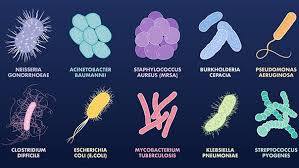
Ancient bateria are the oldest living organisms on Earth. - bark: The touch outer covering of a tree trunk.

The characteristics of a tree's bark can be used to identify the type of tree. - base: A compound that reacts with an acid to form a salt.
Soap is a base. - barometer: An instrument that measures air pressure.
There are two kinds of barometers: mercury and aneroid.
Note: aneroid: a- ("without") + nēros ("water")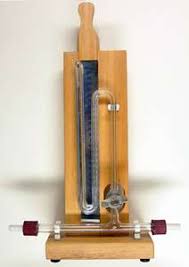 <-- mercury barometer
<-- mercury barometer 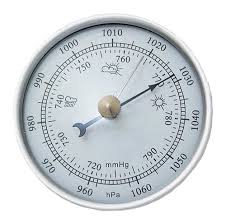 <--- aneroid barometer
<--- aneroid barometer
- bile: A digestive juice that breaks down fats in the small intestine.
Bile is produced by the liver. - bird: A vertebrate animal that has bothe feathers and wings.
Turkeys, hawks, and ducks are birds. - bladder: An organ of the excretory system that temporarily stores urine.

The human bladder can increase in size to hold one and a half pints.
Note: (US) 1 pint = 16 US fluid ounces = 473 ml; (BR) 1 pint = 20 imperial fluid ounces = 568 ml - boiling point: The particular temperature at which a substance changes state from liquid to gas.

The boiling point of water is 100 degree Celsius, or 212 degree Fahrenheit. - bolus: A ball of chewed food.
from Greek bōlos ("clod, clot, mass, lump")
Food taken into the mouth is turned into a bolus before being swallowed. - bronchi: Small branchlike tubes in the lungs.

The bronchi lead back to the trachea. - cambium: A layer of cells in plants that separates the xylem and the phloem.
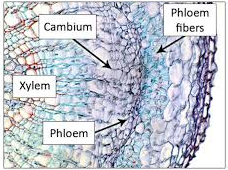
The cambium also produces new xylem and phloem cells.
Note:
cambium ( 形成层 ): from Latin "change, exchange"
xylem: from Greek xulon ("wood") + the passive suffix -ēma
phloem ['floʊem] : from Greek phloos ("bark") + the passive suffix -ēma - cancer: A disease in which harmful cells multiply without stopping.
Different types of cancer attack different parts of the body, such as bones or specific organs. - canies: The long, pointy teeth next to the front teeth.
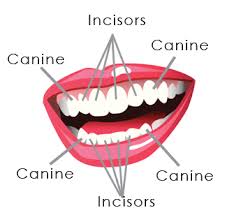
Canines are useful for cutting and tearing into food. - capillary: A tiny blood vessel.
The many capillaries in the lungs help blood to absorb oxygen from the air. - carbohydrate: A group of chemical compounds made from carbon, oxygen, and hydrogen.
Carbonhydrates are the major source of food energy for plants and animals. - cardiovascular system: Another name for the circulatory system, which transports materials throughout the body.

The heart, blood vessels, and blood are all parts of the cardiovascular system. - cecum: The first, shortest part of the large intestine.
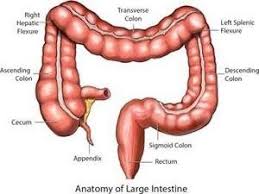
The cecum connects the large intestine to the small intestine. - cell: The smallest unit of living matter that can carry out the basic processes of life.

Your body is made up of trillions of cells. - cell membrane: The layer around the outside of a cell.
The membrane gives the cell its shape and controls what goes in and out. - cellular respiration: The life process in which energy is released from food (sugar) inside a cell.
During celluar respiration, animals take in oxygen and release water and carbon dioxide. - cell wall: An additional layer around the outside of plant cells.
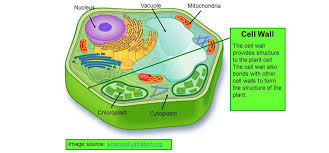
Cell walls provide extra support and help plants stand tall. - chemical: A substance obtained by or used in a chemical process.
Cleaning products are made from chemicals. - chemical change: A change that causes a new kind of matter to form with different properties.
When food burns, the chemical change makes it look, feel, and taste different. - chemical formula: A way to write a compound's name using symbols.

The chemical formula tells what elements are in the compound, and the subscripts tell the number of particles in the compound. - chemical reaction: A change or reaction that creates a new kind of matter (product) with different properties from the original matter (reactant).
Wood yields charcoal in the chemical reaction caused by fire. - chlorophyll: A green chemcial that plants use for photosynthesis.
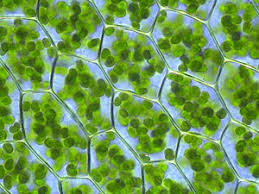
Chlorophyill allows plants to turn sunlight into food. - chloroplast: Green structures inside plant cells that turn sunlight into food.
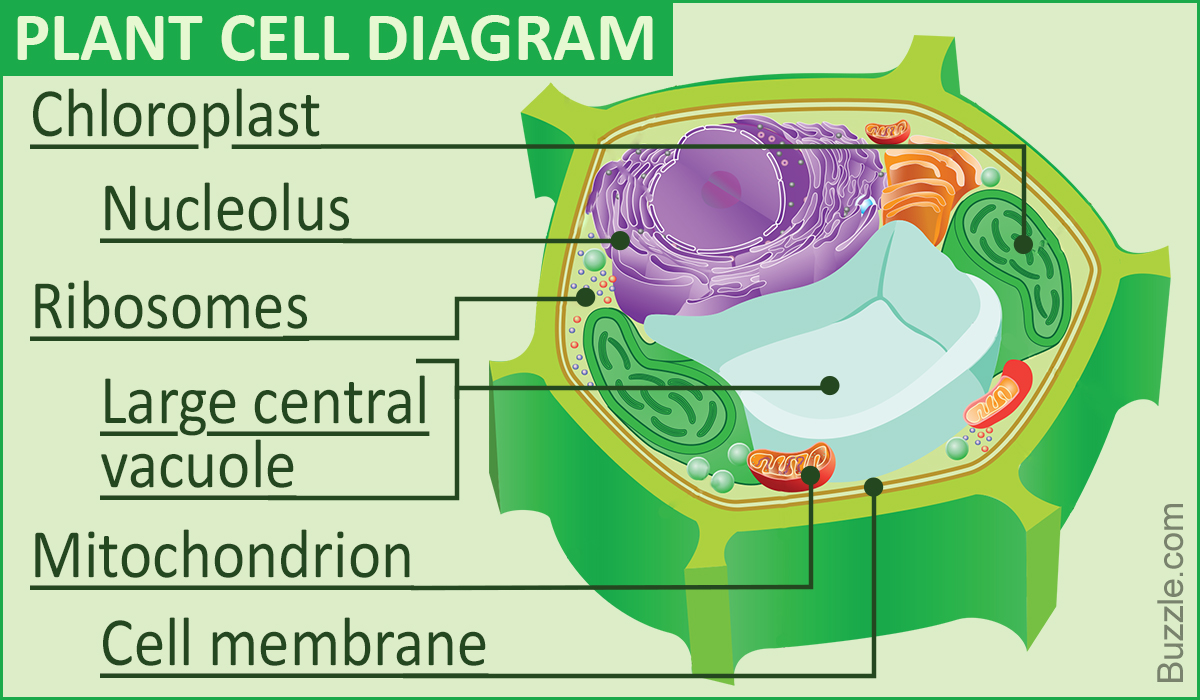
Chloroplast contain the chemical chlorophyll. - Chordata: A phylum of animals that have a supporting rod that runs most of the length of the body for at least part of their lives.
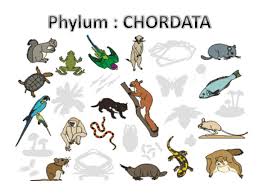
Dogs, cats, and humans are all in the phylum Chordata. - class: A smaller group within a phylum of similar organisms.
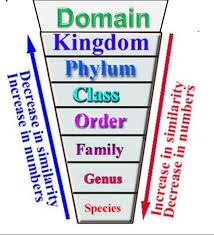
Classes are made up of even smaller groups called orders. - circulatory system: The organ system that moves blood through the body. (cf. cardiovascular system)
The circulatory system aids in the transport of oxygen, carbon dioxide, and nutrients. - classify: To place similar material together in a group.
You can classify materials by comparing and contrasting their properties. - climate: The average weather pattern or a region.
Climate includes average temperature, rainfall, humidity, and wind condition. - collecting duct: A tube connected to nephrons within the kidney.
The collecting duct holds waste material filtered out by the nephron. - colon: The widest and longest part of the large intestine.
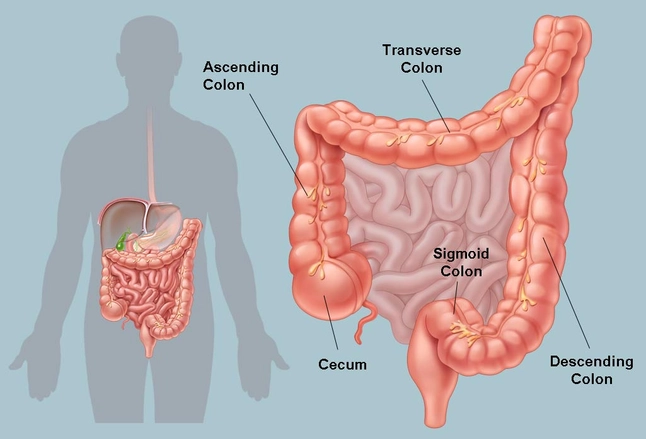
Some absorption of water and minerals takes place in the colon. - comet: A piece of ice mixed with rocks, dust, and gases moving through space.

A comet may have a glowing tail as it approaches the Sun. - communicate: To share information.
Some scientists communicate their results by writing books and making presentations. - compound: A substance formed by the chemical combination of two or more elements held together by chemical bonds that cannot be separated by physical means.
A compound has properties unlike those of the elements that make up the compound. - condensation: The process in which matter changes state from gas to liquid.
When water vapor in the air condenses, it can form dew on cool surfaces. - condensing point: The particular temperature at which a substance changes state from gas to liquid. (cf. boiling point)
The condensing point of water is 100 degree Celsius, or 212 degree Fahrenheit. - conduct: To transfer heat or electricity from one place to another.
Metal, such as iron and copper, are good conductors. - conductivity: The degree to which heat or electricity flows through a substance.
Electrical wiring is made from metals with high conductivity. - conservation: The act or policy of saving or protecting something.
Conservation leads people to use less of the planet's resource to help preserve them for the future. - contaminate: To make dirty or impure.
Litter and other kinds of pollution can contaminate fresh water. - convection: The transfer of heat through the movement of a gas or liquid.
from con- ‘together’ + vehere‘carry’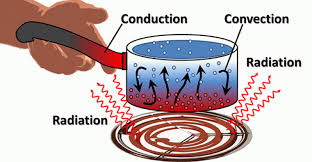
When convection occurs in the air, winds are formed. - Coriolis effect: In the northern hemisphere, counterclockwise movement caused by Earth's rotation.
The spiral of a hurricane shows how the storm is shaped by the Coriolis effect. - corrosion: The gradual weakening and wearing away of something, especially due to a chemical reaction.
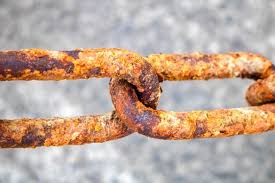
Corrosion occurs when the metal iron reacts with water and forms rust. - current: An ongoing movement in one direction.
An ocean current is a large stream of water that flows through the ocean.
Electrical current describes the flow of charged particles through a wire. - cyclone: A strom with a low pressure closure and a circular pattern of winds.
Tornadoes and hurricanes are both types of cyclones.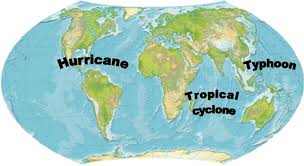
- cytoplasm: The gel-like substance that fills a cell.
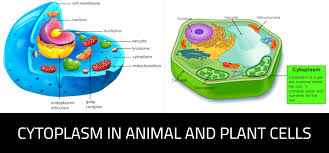
The cytoplasm supports all of the other cell structures. - dam: a barrier that prevent or restricts the normal flow of water.
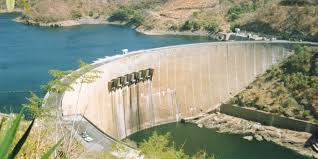
Reservoirs are usually made by constructing a dam across a stream or river. - density: A measure of how tightly matter is packed in a given amount of space.
Density can tell you whether an object will float or sink in a liquid. - desalination: To remove salt from a substance.
At a desalination plant, salt and other impurities are removed from ocean water to create fresh water. - dialysis: A medical treatment that carries out the same processes as the human kidney.
A dialysis machine filters the blood to remove waste and excess water. - diaphragm: A flat muscle that controls breathing.

Your diaphragm is beneath your lungs near the bottom of the rib cage. - diffusion: The movement of particles from areas with high concentration to areas with low concentration.

Oxygen passes from the lungs into the blood by diffusion. - digestion: The process by which food is broken down into usable substances.
Digestion begins the moment you start to chew something. - digestive system: The organ system that breaks down food into nutrients that cells need.
The mouth and stomach are parts of the digestive system. - disperse: To scatter or spread.
Plant seeds are dispersed in many ways, including animals and the wind. - draw conclusion: To arrive at possible answers based on information you have gathered.
After you analyze the data from an experiment, you can draw conclusions about what you observed. - drought: a long period of dry weather.

A drought can destroy crops and lead to water shortages. - ductile: Capable of being drawn out into wire or thread.

Copper and gold are both ductile metals. - ecology: The study of how all things in an environment interact with one another.
A plant ecologist may study the ecology of plants in specific environment, such as wetlands or farms. - electron: A particle in the space outside the nucleus of an atom that carries one unit of negative electric charge.
Atoms have the same number of protons and electrons. - electron microscope: A magnifying tool that uses electron beams instead of light to "see" small objects.
Atoms can only be seen using an electron microscope. - element: A pure substance that cannot be broken down into any simpler substance.
Oxygen, carbon, and iron are all elements. - elimination: The process of removing or getting rid of something.
In the body, elimination takes place through many pores and openings, such as the anus. - ellipse: A flattened circle.

Planets move through space in ellipses. - endocrine system: The organ system that produces chemicals to regulate and control body functions.
The chemicals of the endocrine system also affect the reproductive system. - epiderms: The outermost layer.
In plants, the epidermis is the outermost layer of a leaf.
In humans, it is the surface layer of the skin. - epiglottis: The flap of tissue in the back of the throat that protects you from choking.

The epiglottis closes when you swallow food. - equator: The imaginary line that runs around the middle of Earth.
Sunlight strikes Earth most directly at the equator. - esophagus: a long muscular tube leading to the stomach.
Your esophagus is lined with mucus that helps food slide along. - evaporation: The slow changing of a liquid into a gas.
Evaporation is slower than boiling and can occur at lower temperatures. - evergreen: A type of gymnosperm that replaces leaves that are lost.
The leaves of evergreens, such as pine, spruce, and firs, are sometimes called needles. - excretory system: The organ system that removes waste materials from the body.
The kidneys are part of the excretory system. - exhale: To breathe out.
When you exhale, your body expels carbon dioxide. - family: A group of things that are related in some way.
In the classification of living things, families fall between orders and genera.
In the periodic table, families of elements have similar chemical properties. - feces: Solid animal waste.
In humans, feces are stored in the rectum until they can be expelled. - fertilization: The joining of a male sex cell with a female sex cell to make one new cell.
Fertilization in plants occurs when pollen transfers to the egg cell. - fibrous root: One of the many thin, hairy, fibrous roots that characterize some plants.

Grasses have fibrous roots. - filtration: The passing of a mixture through a system that can separate small particles from larger particles.

A mixture of dirt and water can be separated by filtration. - fish: A vertebrate animal that lives its entire life in the water.
The bodies of fish are covered with scales. - flood: The flow of water over the banks of a body of water and across land.
Large amounts of rainfall can cause floods along rivers. - fog: A cloud that forms near the ground.

Dense fog is considered to be a severe form of weather. - forecast: (v. / n.) To predict; a prediction.
A weather forecast makes the best guess at what the weather will be in the near future. - freezing point: The particular temperature at which a substance changes state from liquid to sold.
The freezing point of water is 0 degree Celsius, or 32 degrees Fahrenheit. - freshwater: Characterized by water that is not salty.
Most ponds and most rivers are freshwater environments. - front: The place where two air masses meet.
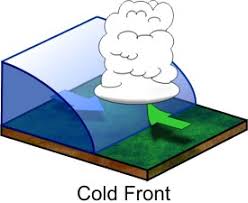
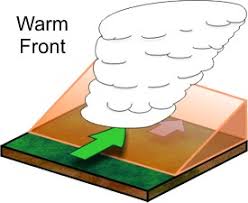
A change in weather usually occurs when a front passes over an area. - fungus (pl. fungi): Members of a kingdom that cannot make their own food and must absorb it from their environment.
Mold, mildew, and mushrooms are all examples of fungi.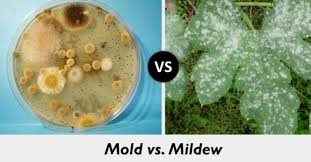

- fusion: The smashing together of particles to create new particles.
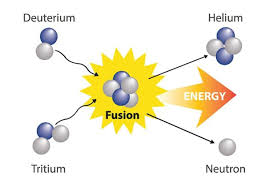
Fusion can create energy and produces the light and heat of the Sun. - gallbladder: A small structure in the body's digestive system that stores bile.
The gallbladder looks like a small sack. - gas: Matter in a state that has no definite shape or volume.
The particles in a gas are moving very rapidly and are widely spread out. - genera (sing. genus): A group made up of two or more very similar species.
Genera fall between families and species in the classification of living things. - glacier: A large body of ice that moves slowly over land.

Glaciers are capable of creating deep valleys. - gland: A group of cells that can filter blood and/or produce substances that assist in various bodily processes.
The salivary gland in the mouth and throat assist with digestion. - global wind: A wind that blows in a predictable direction.

Global winds blow because of differences in air pressure between Earth's poles and the equator. - gravity: The force of attraction between two masses.
The gravity between your body and Earth prevents you from floating into space. - groundwater: Precipitation that seeps below the surface of Earth.
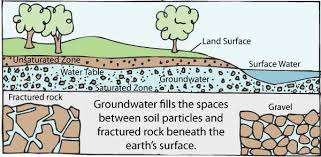
People drill wells to tap into Earth's groundwater. - gymnosperm: A seed plant that does not produce a flower. (cf. angiosperm)

Most gymnosperms are evergreens that have seeds inside their cones. - hardness: How well a mineral resists scratching or a metal resists denting.
Gold has a low hardness. - halogen: An element in the most reactive family of nonmetals.

Fluorine and chlorine are both halogens. - heart: The muscular organ that pumps blood throughout the body.
The human heart beats about 70 to 90 times a minute in the chest. - heavy metals: Certain toxic elements, such as lead and mercury.
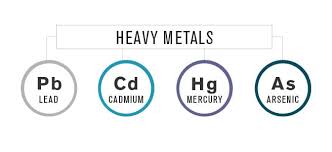
Heavy metals in drinking water can make a person sick. - heterogeneous: Made up of things that differ in kind and/or nature.
In a heterogeneous mixture you can see the particles of different substances. - homogeneous: Made up of things that either look the same or are the same.
In a homogeneous mixture, the individual particles are too small to distinguish and look the same throughout. - high pressure system: A large mass of air with high atomospheric at the center.
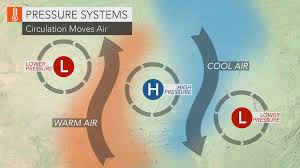
The wind in a high pressure system turns in a clockwise direction. - humidity: The amount of water vapor in the air.
As humidity increases, air pressure decreases. - hurricane: A very large, swirling storm with very low pressure at its center and wind speeds higher than 73 miles per hour.
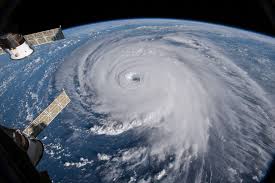
Hurricanes have an "eye" that forms at the center. - hydrocarbon: A compound made only of hydrogen and carbon atoms.

- hypothesis: A testable statement about what someone thinks is logically true.
A hypothesis is tested using an experiment that may either support or disprove it. - ice sheet: A large covering of ice and snow that lasts a long time.
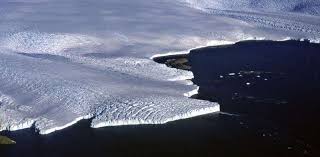
Antarctic is covered in an ice sheet. - immune system: The organ system that fights disease and helps heal injuries.
The immune system includes cells that attack harmful organisms in the body. - incisors: The teeth in the front of the mouth.

Inscisors are used for biting into food. - indicator: A person or thing that indicates.
- inertia: The tendency of a moving object to continue moving in a straight line.
Gravity and friction affect an object's inertia. - infer: To come up with an idea based on facts or observations.
The data from an experiment can help you infer what happened. - inhale: To breathe in.
When you inhale, air enters the body through the nose and mouth. - insulator: Something that resist the flow of energy, such as heat, electricity, or sound.
Most nonmetals, such as wood and rubber, are good insulators. - integumentary system: The organ system that covers and protects the body from injury and infection.
The integumentary system includes hair, skin, and nails. - invertebrate: An animal that does not have a backbone.
Mollusks, sponges, and arthropods are all invertebrates. - jet stream: Powerful high altitude global winds above high and low pressure systems.

Jet stream winds can move faster than 150 miles per hour. - kidney: A bean-shaped organ that filters waste out of the blood.
The kidneys produce urine. - kingdom: The broadest group into which organisms are classified.
The animal kingdom and the plant kingdom are two of the six kingdoms.
- land breeze: The movement of air from land to water.
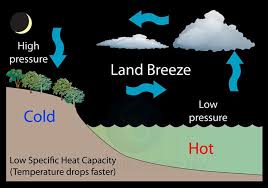
- large intestine: A thick, tubelike organ that removes waste from the body.

The large intestine is shorter and thicker than the small intestine. - latitude: A measure of how far north or south something is from the equator.

You can describe an object's location on Earth in terms of its latitude and longitude. - leaf: The part of a plant that collects light from the Sun and makes sugar.
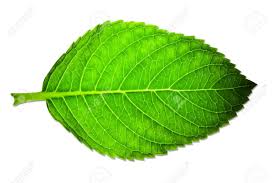
The leaves also take in carbon dioxide and release oxygen. - lightening: A large spark caused by the discharge of electricity in a thunderhead.

Lightening can jump from one cloud to another or from a cloud to the ground. - liquid: Matter in a state that has a definite volume but not a definite shape.
The particles in a liquid move faster than in a solid but remain relatively close together. - liver: A large glandular organ that produces digestive juices and breaks down harmful substances in the blood.
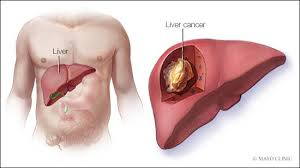
The liver is part of the digestive and the excretory system. - low pressure closure: An area of low pressure surrounded by an area of high pressure.

A low pressure closure can lead to the creation of a tornado. - lungs: The main organ of the respiratory system.
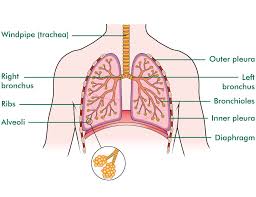
The lungs fill with air and allow gases to enter and leave the blood. - malleable: Capable of being rolled or pounded into flat sheets.

Tin, copper, and aluminum are malleable metals. - mammal: A vertebrate animal with hair that feeds its young milk.
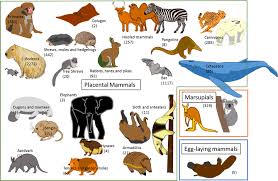
Some mammals, such as horses, live on land while others, such as whales, live in water. - mass: The amount of matter in an object.
Mass is measured in units called grams. - matter: Anything that has mass and takes up space.
Scientists think that matter is made up of particles. - measure: To find the size, volume, area, mass, weight, or temperature of an object.
When you measure something, you gather data or information about it. - melting point: The particular temperature at which a substance changes state from solid to liquid.
The melting point of water is 0°C, or 32°F. - metal: A substance that conducts heat and electricity.
Metals, such as gold and iron, are shiny when polished and can ben bent or flattened into shapes without breaking. - metalloid: A small group of elements with some properties of both metals and nonmetals.

Boron and silicon are metalloids. - metamorphosis: A process in which something changes form from one thing into another thing.
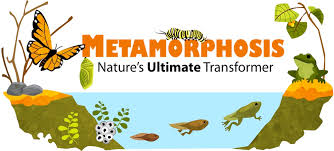
Catepillars undergo metamorphosis to change into moths. - meteor: A small piece of ice, rock, or metal that enters Earth's atmosphere.

Most shooting stars are also meteors. - meteorologist: A scientist who studies Earth's atmosphere and weather.
Meteorologists try to predict the weather. - microscope: A tool that magnifies objects.
A microscope allows us to see and study very small objects like cells. - mitochondria: Structures within a cell that break down food and turn it into energy.

The more energy a cell needs, the more mitochondria it will have. - mixture: A physical combination of two or more substances taht does not form a new substance.
A bowl of raisins, nuts, and pretzels is a mixture.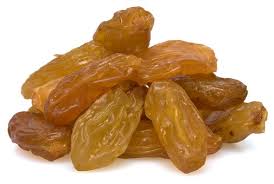 <--- raisins
<--- raisins  <--- nuts
<--- nuts 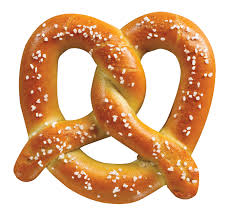 <--- pretzel
<--- pretzel
Note: raisin: 葡萄干; pretzel: 椒盐饼干 - molars: The flat teetch in the back of the mouth. (cf. incisors, canines)
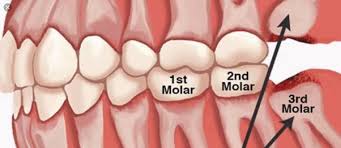
Molars are useful for crushing and grinding food. - molecule: A particle that contains two or more atoms joined together.

Oxygen molecules are made up of two oxygen atoms. - mollusk: Invertebrate animals with an external or internal shells.
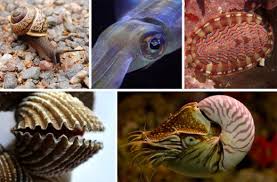
Snails, clams, and octopuses are mollusks. - monsoon: A seasonal wind usually associated with heavy rains.
Monsoon winds occur in southern Asia and the southwestern U.S. - Moon: An object that circles around a planet.
Some planets have many moons of different shapes and sizes. - mucus: A slippery liquid inside the body.
Mucus in the esophagus keeps food from getting stuck. - multicellular: Made up of more than one cell.
Animals and plants are multicellular organisms. - muscular system: The organ system made up of muscles attached to bones.

The muscular system helps you move. - nanotechnology: Science that works with materials at the atomic or molecular level.
Nanotechnology refers to devices and procedures that are very, very small in size. - nephron: Small individual filters within the kidneys.
Nephrons separate waste from useful substances in the blood. - nervous system: The organ system that controlls all other body systems.

The nervous system includes the brain, the spinal chord, and nerves. - neutralization reaction: The reaction that occurs when an acid and a base react to form water and salt.

- newton: A basic unit that measures a force, such as gravity.
A person's weight can be expressed in newtons. - noble gases: The nonmetallic elements helium, neon, argon, krypton, xenon, and radon.

Noble gases rarely react with other elements. - nonmetals: A group of elements that are poor conductors of heat and electricity.

Many nonmetals, such as oxygen and helium, are gases at room temperature. - nonvascular: Containing no plant tissue through which food or water moves.
Mosses are nonvascular plants that get water and food directly from the ground. - neucleus: An object positioned at the center; in cells, the structure that controls all activity wihin a cell.
The neucleus is the central command center of the cell. - nutrient: An substance that is useful to an organism.
Cells draw their energy from nutrients. - observe: To use one or more of your senses to identify or learn about an object or event.
You conduct an experiment to observe what happens in a particular situation. - ocean: A large body of salt water.

The Atlantic and the Pacific are both oceans. - orbit: The path an object takes as it travels around another object.
Earth's orbit requires about 365 days to complete. - order: A smaller group within a class of similar organisms.
Orders are made up of even smaller groups called families. - organ: A group of tissues that work together to perform a specific bodily function.
The lungs, heart, and stomach are all organs. - organism: An individual living thing.
All organisms carry out five basic life functions. - organ system: A group of organs that work together to perform a specific bodily function.
The digestive system and the respiratory system are examples of animal organ systems. - oscillation: Movement back and forth.
Shifting wind patterns can lead to an oscillation in weather conditions. - pancreas: A gland that produces digestive fluids and other helpful chemicals.

The pancreas is located on top of the small intestine. - paramecium: A common-animal like protist that cannot produce its own food.
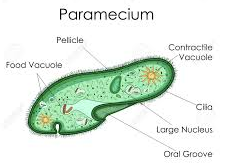
A paramecium moves using hairlike structures that stick out of its cell membrane. - pericardium: The sac of tissue around the heart.
The pericardium protects the heart. - periodic table: A chart that shows all of the known elements and their properties.
The periodic table places elements with similar chemical properties in groups of families. - petiole: The part of a plant that connects the leaf to the stalk.
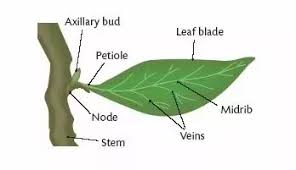
Veins in a leaf usually branch out from the petiole. - pharynx: The part of the throat that connects the mouth to the digestive tube.

The pharynx is located just above the esophagus. - pH scale: The scale that measures the amount of acid or base solution.

Fourteen on the pH scale is basic (alkaline). - phloem: The tissue in a plant that moves food down from the leaves to other parts of the plant.

The location of phloem depends on the type of stem. - Photosynthesis: The process by which plants turn sunlight, water, carbon dioxide, and other nutrients from the soil into food.
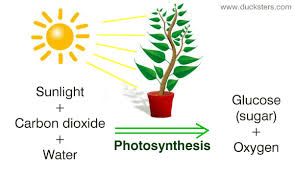
Most photosynthesis takes place in the chloroplasts of the plant. - phylum (pl. Phyla): The level of classification of living things below kingdom and above class.
The two phyla in the animal kingdom are vertebrates and invertebrates. - pistil: The parts of a plant that produce the female sex cells.

The ovary is part of the plant's pistil. - plasma: A fluid in which other materials are suspended, as with blood cells in blood.

Blood plasma is made up of water and proteins. - platelet: Small cell fragments that help the body heal.

Platelets clump together to form patches that stop bleeding. - pollen: The powder-like grains in a flower that contain the male sex cells.

During pollination, pollen is transferred from stamen to pistil. - pollination: The process in which the male and female cells of plants come together.

After pollination a seed develops that lets the plant reproduce. - pollute: To make dirty, unclean, or contaminated.
Litter pollutes the landscape. - pore: A small opening.
Pores in the skin are connected to sweat glands and assist in waste elimination. - precipitate: The solid product of a chemical reaction in a solution.
Magnesium carbon is the precipitate formed when Epsom salts (magnesium sulphate) react with washing soda.
Note: Epsom: a place name in Surrey, England.

- precipitation: Water droplets that form in the atmosphere and fall to the ground.
Precipitation can take the form of rain, snow, sleet, or hail.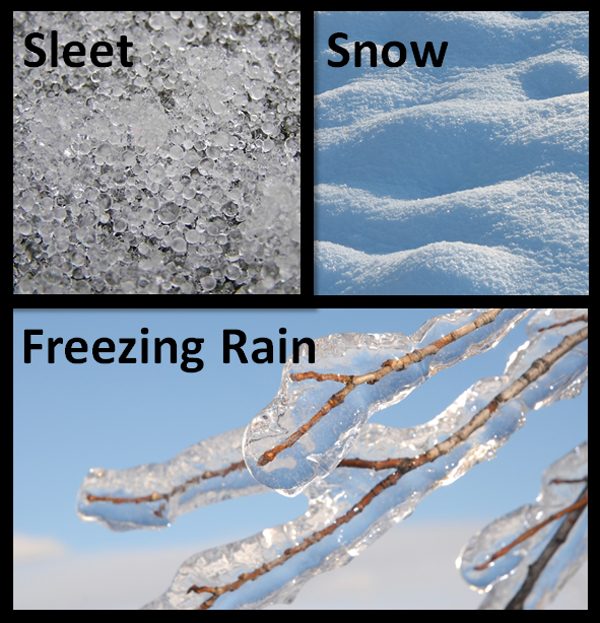
- product: A new substance resulting from a chemical change.
Glass is the product of heated sand. - property: A trait of something that can be observed and measured.
The physical property of matter include volume, mass, and weight. - prop root: Roots that grow like fingers out of the stem of a plant.
Corn plants and mangroves have prop roots. - protist: A member of the kingdom Protista, which contains mostly unicellular organisms with distinct nulei.
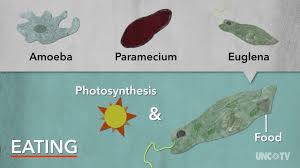
Protists can be like animals, plants, or fungi in terns of how they get food. - proton: A particle in the space inside the nucleus of an atom that carries one unit of positive electric charge.

Atoms have the same number of protons and electrons. - pulmonary: Having to do with the lungs.
A pulmonary artery brings oxygen-poor blood from the heart to the lungs; a pulmonary vein brings oxygen-rich blood from the lungs to the heart.
- reactant: An original substance at the beginning of a chemical reaction.
Carbon and oxygen atoms are reactants that yield the product carbon dioxide when carbon is burned. - reactivity: The ability of elements to take part in chemical reactions.
Most metals have high reactivity, while the noble gases do not. - reclamation: The act of recycling or restoring something to a usable state.
Land reclamation efforts can convert poor soil back into fertile farmland. - record data: To make note of an observation in a permanent way, as in writing.
When you record data on a chart, you organize your observations. - rectum: The last part of the large intestine.

Solid waste is stored in the rectum until it can be expelled. - renal: Having to do with the kidneys.
The renal artery brings blood into the kidneys.
- reproduction: The process of creating more of the same kind of organism.
Reproduction is one of the basic life processes of all living things. - reproductive system: The organ system that produces offsprings.
The reproductive system differs between males and females.
- reptile: A land vertebrate with thick, dry, scaly skin.
Snakes, lizards, and turtles are reptiles. - reservoir: A man-made lake that stores water for later use.
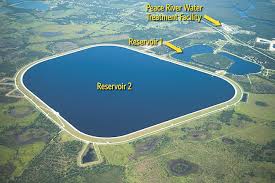
Most reservoirs are created by damming a stream or river. - respiration: The life process in which energy is released from food (sugar).
Plants and animals take in oxygen during respiration. - respiratory system: The organ system that brings oxygen to body cells and removes waste gas.

The lungs are part of the respiratory system. - root: The part of a plant that absorbs water and mineral, stores food, and anchors the plant.
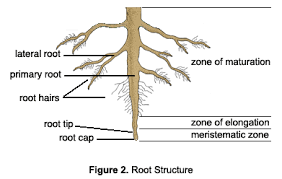
The roots usually spread out and down into the soil. - saliva: A watery fluid that moistens and softens food.
Saliva helps digestion by chemically breaking down food. - salt: A white substance that is found in sea water and in the earth.

- salivary glands: Glands that produce a watery fluid that aids in digestion.
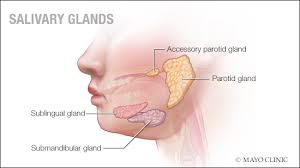
You have salivary glands in your mouth and throat. - satellite: An object in space that circles around another object.
Earth's moon is a satellite. - sea breeze: The movement of air from water to land.
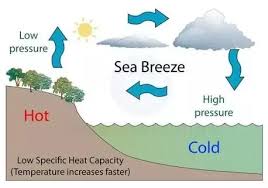
You feel sea breezes on beaches. - seed: An undeveloped plant with stored food in a protective covering.

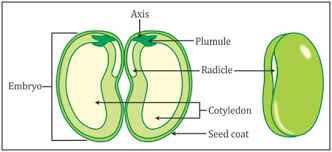
Seeds are formed when a male and a female cell join. - skeletal system: The organ system made up of bones that support the body.
The skeletal and muscular system work together to help you move. - small intestine: A coiled, tubelike digestive organ connected to the stomach.
Partially digested food is broken down into nutrients inside the small intestine. - solar flare: A huge burst of heat and energy from the surface of the Sun.

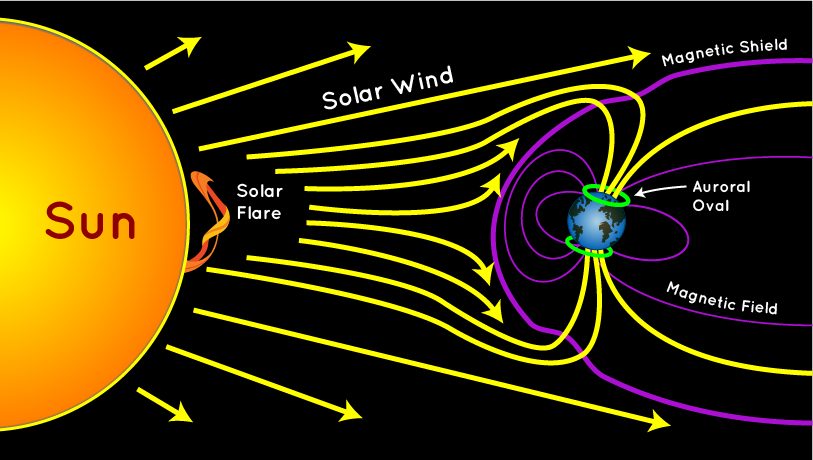
Solar flares can affect electronic equipment even on Earth. - solar system: The sun and the objects in orbit around it.

Our solar system is in the Milky Way galaxy. - solid: Matter in a state that has a definite shape and volume.
The particles in a solid are not moving around. - solubility: The greatest amount of a solute that can be dissolved by a given amount of solvent.
The solubility of table salt is 37 grams per 100 grams of water at room temperature. - solute: The substance in a solution that dissolves.
In salt water, salt is the solute.
- solution: A mixture that is blended so completely that it looks the same everywhere.
When sugar dissolves in water, it forms a solution. - solvent: The substance in a solution into which other substances dissolve.
In salt water, water is the solvent. - species: The narrowest group in the classification system of living things.
Organisms in the same species are very closely related. - spore: A single cell that can develop into a plant exactly like the one that produced it.
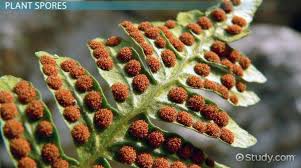
Spores will not grow and produce plants unless they are near water. - stamen: The part of the plant that holds the male cells for reproduction.
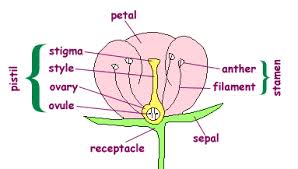
The stamen is part of the plant's anther. - star: An object in space that produces its own light and heat.
The nearest star to the Earth is the Sun. - starch: A complex carbonhydrate made of thousands of sugar units.
Plants store sugar in the form of starch. - state of matter: One of three forms that matter can take.
The states of matter are solids, liquids, and gases. - stem: The main stalk of a plant.
A plant's stem holds it uprights and carries food and water. - sternum: The vertical bone in the center of the chest.
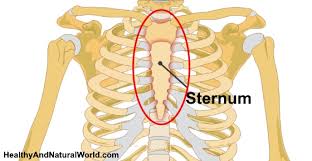
The sternum helps to protect the heart from injury. - stomach: The main digestive organ in most animals.

The human stomach has three layers of muscles and glands that produce chemicals for breaking down food. - stomata (pl. stoma): Small pores on plants, usually on the bottoms of leaves, through which air and water pass.
Stoma open and close to let in and give off gases. - storm surge: A bulge of water created by an area of very low pressure in the ocean.

The storm surge can be the most destructive part of a hurricane along the coast. - sublimation: The process in which matter changes state from a solid directly into a gas.
When dry ice is exposed to room temperature, the crystals sublime rapidly into a vapor. - subscript: A number in a chemical formula that tells how many atoms of a particular element are in the compound.

The subscript is usually a small number written to the right and lower than the symbol for the element. - sunspot: A dark spot that occurs on the Sun's surface.

The number of sunspots changes over time. - superconductor: A material that loses all resistance to electrical flow at extremely low temperature.
Superconductors are used today in some fast-moving trains in Germany, Japan, and China. - suspension: A mixture whose visible particles settle and separate over time.
Oil and vinegar shaken together create a suspension. - sweat: Fluid that helps the body eliminate excess water and waste materials through pore in the skin.
Sweat also helps the body to cool off. - taproot: A root that grows deep into the ground and has few hairy branches.
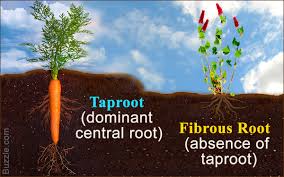
Dandelion, carrot, and beet plants have taproots. - telescope: A tool that makes distant objects appear closer and larger.
The Hubble telescope allows us to see distant planets and stars more clearly.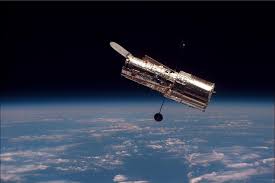
- temper: To warm up something cold, or cool down something hot.
Cold air that comes in contact with warm water is tempered. - thunder: The noise caused by rapidly expanding air heated by lightning.
Thunder can sound like a big bang or a low rumble. - thunderhead: A cloud in which a thunderstorm forms.
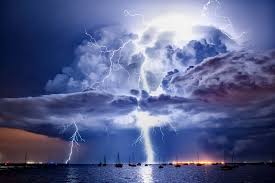
Most thunderheads are cumulonimbus clouds. - thunderstorm: A rainstorm that includes thunder and lightning.

Thunderstorms are the most common types of severe weather. - tide: The rise and fall of the ocean's surface.
The moons gravitational pull affects tides on Earth. - tissue: A group of similar cells that work together to do the same job.
The cells in muscle tissue all work to move parts of the body. - tornado: A rotating, funnel-shaped cloud with extremely high-winds.
Tornados are also called "twisters" because they often twist as they move. - toxin: A poisonous substance within the body.
The liver and kidneys both help to remove toxins from blood. - trachea: The strong tube that connects the throat to the bronchi of the lungs.
The trachea, or windpipe, is a major part of the respiratory system. - trade winds: Winds that blow between 30˚N latitude and 30˚S latitude.

Sailors relies on trade winds to transport items for sale around the globe. - tropical storm: A large storm near the equator with low pressure at its center and rotating winds.

A tropical storm becomes a hurricane when its winds reach a certain speed. - troposphere: The layer of Earth's atmosphere that is closest to the surface.
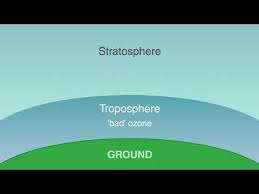
All of the organisms on Earth exist in the troposphere. - unicellular: Made up of only one cell.
A unicellular organism can carry out all the basic life processes in once cell. - ureter: A tube that carries urine from the kidney to the bladder.

Ureters are part of the body's excretory system. - urethra: A tube that carries urine from bladder to the outside of the body.

The urethra is part of the excretory system. - urinary system: The part of the excretory system that handles most liquid wastes.
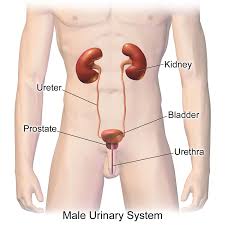
The kidneys, bladder, and urinary tract are parts of the urinary system. - urination: The process of releasing urine from the bladder and out of the body through urethra.
Urination may become more frequent shortly after a person drinks more fluids. - urine: A fluid consisting of body waste and excess water.
The kidneys produce urine by filtering the blood. - vacuole: A cell structure used for storage.

Vacuols can hold water, food, and waste products. - valve: A flap that allows fluids to flow in only one direction.
In the heart, valves allow blood to pass from the atrium into the ventricle and not the other way. - variable: Something that can be changed or controlled.
When measuring solubility, temperatur is a significant variable. - vascular: Containing vessels that transport water and food.
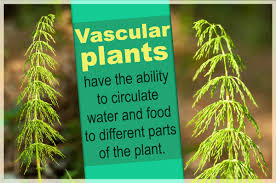
Vascular plants have tissue that allows them to grow tall and still move food and water throughout the organism. - vein: A blood vessel that transports blood back to the heart.
Veins, such as vena cava, connect to the heart's atriums. - vena cava: The main vein leading from the body back to the heart.
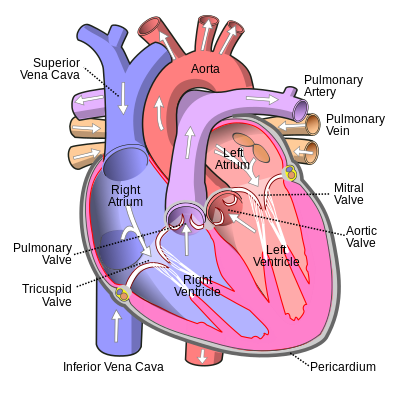
The vena cava enters the right atrium of the heart. - ventricle: A lower chamber of the human heart.
In the heart, blood flows from an atrium into a ventricle and is then pushed out into the body. - vertebrate: An animal that has a backbone.
Fish, amphibians, reptiles, birds, and mammals are all vertebrates. - villi: Small hairlike structures that protrude from a surface.
Villi in the small intestine increase absorption by providing more surface area.
- volume: The amount of space that an object takes up.
The unit measure of volume for liquids is the liter (L); for solids it is the cubic meter. - water cycle: The continuous movement of water from a liquid state on the ground to a vapor state in the air and back again.
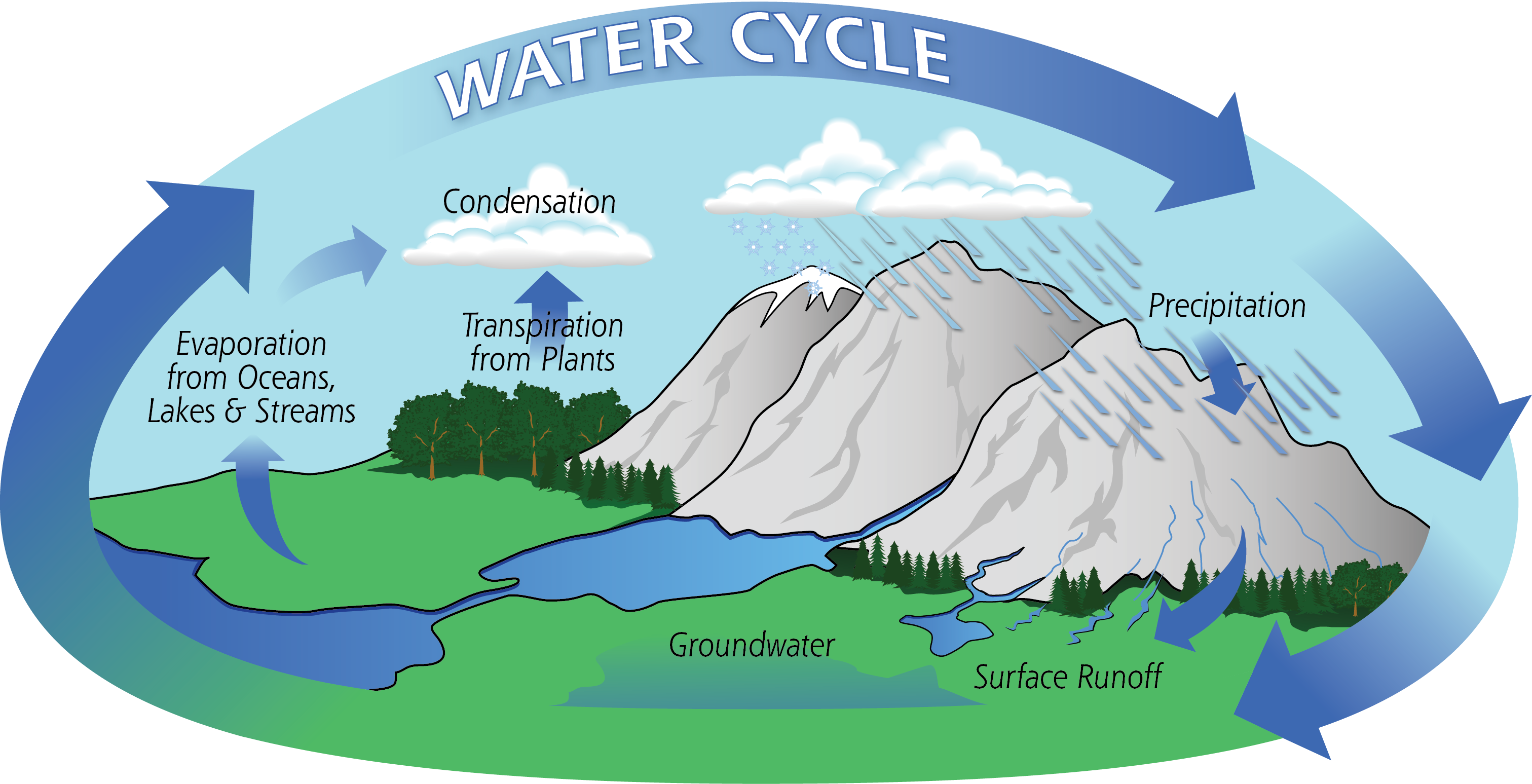
Cloud formation and rainfall are two parts of the water cycle. - watershed: An area of land that drains into a specific river.
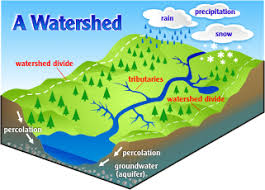
There are ten watersheds in California. - Water vapor: The gas state of water.
You cannot see water vapor in the air. - weight: A measurement how strongly gravity pulls on an object.
Weight can be measured in newtons or in pounds and ounces. - weather map: A model or representation of one or more weather variables.

A weather map might show temperatures, precipitation amounts, or wind speeds. - xylem: Plant tissue that moves water and minerals up from the roots.


Most of the layers in a tree trunk are made of xylem.
